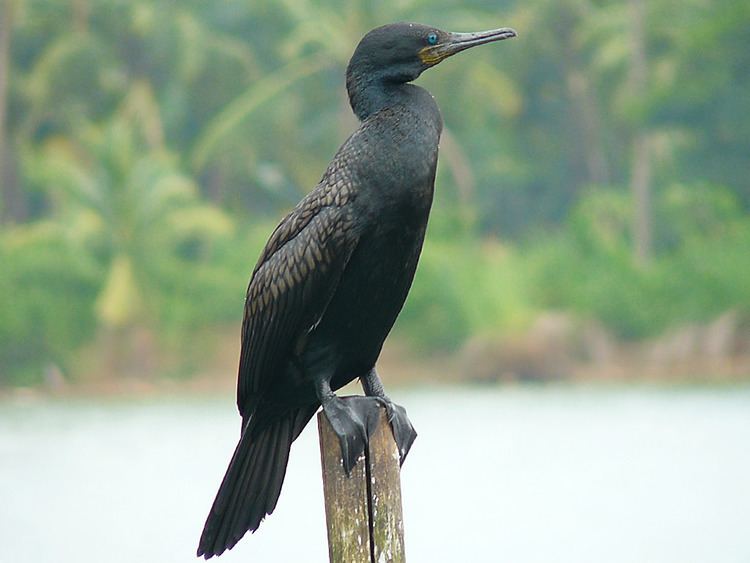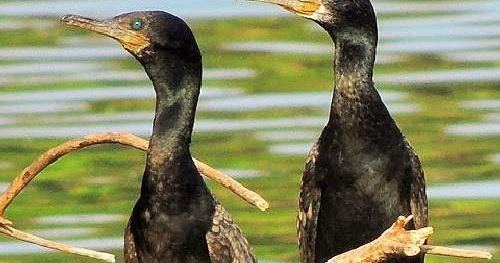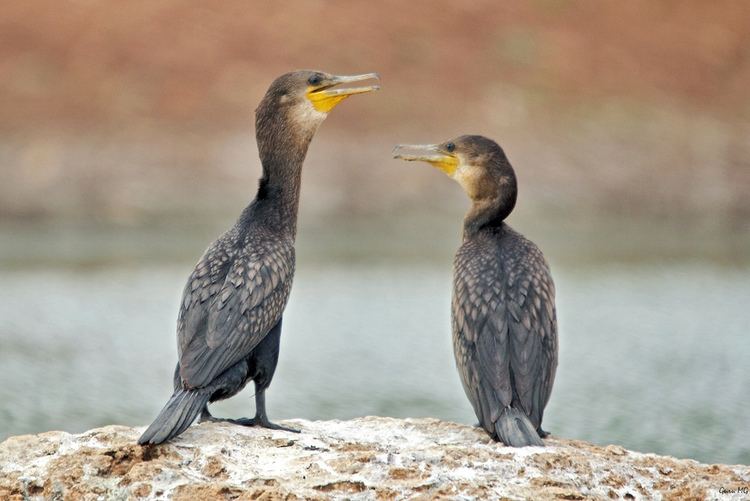Genus Phalacrocorax Conservation status Least Concern Higher classification Phalacrocorax | Family Phalacrocoracidae Scientific name Phalacrocorax fuscicollis Phylum Chordata Rank Species | |
 | ||
Similar Bird, Cormorant, Little Cormorant, Phalacrocorax, Indian pond heron | ||
Some birds of goa indian cormorant painted stork lesser whistling ducks great egrets
The Indian cormorant or Indian shag (Phalacrocorax fuscicollis) is a member of the cormorant family. It is found mainly along the inland waters of the Indian Subcontinent but extending west to Sind and east to Thailand and Cambodia. It is a gregarious species that can be easily distinguished from the similar sized little cormorant by its blue eye, small head with a sloping forehead and a long narrow bill ending in a hooked tip.
Contents
- Some birds of goa indian cormorant painted stork lesser whistling ducks great egrets
- The indian cormorant phalacrocorax fuscicollis
- Description
- Habitat and distribution
- Behaviour
- References

The indian cormorant phalacrocorax fuscicollis
Description

This medium-sized bronze brown cormorant is scalloped in black on the upper plumage, lacks a crest and has a small and slightly peaked head with a long narrow bill that ends in a hooked tip. The eye is blue and bare yellow facial skin during the non-breeding season. Breeding birds have a short white ear tuft. In some plumages it has a white throat but the white is restricted below the gape unlike in the much larger great cormorant. Sexes are similar, but non-breeding adults and juveniles are browner.
Habitat and distribution

This cormorant fishes gregariously in inland rivers or large wetlands of peninsular India and northern part of Sri Lanka. It also occurs in estuaries and mangroves but not on the open coast. They breed very locally in mixed species breeding colonies. They extend north-east to Assam and eastward into Thailand, Burma and Cambodia.
Behaviour

The breeding season is July to February but depends on rainfall and water conditions. In northern India, they breed from July to February and in Sri Lanka, between November and February. The nest is a platform of twigs placed in the forks of partially submerged trees or those growing on islands. The nests are placed in close proximity to those of other Indian cormorants, storks or waterbirds in dense colonies, often with several tiers of nests. The usual clutch is three to five eggs which are bluish green and with a chalky surface.

The Indian cormorant makes short dives to capture fish and a group will often fish communally, forming a broad front to drive fish into a corner.
